Implementing DIY Nature-Inspired Decor in Your Home
In today's fast-paced world, finding a way to bring a touch of nature into our living spaces can feel like a breath of fresh air. Imagine stepping into your home and instantly feeling the calming embrace of the great outdoors, all without having to leave your cozy haven. Implementing DIY nature-inspired decor not only enhances the aesthetics of your space but also promotes a serene atmosphere that can help alleviate stress and anxiety. So, let’s embark on this creative journey together, exploring various DIY projects and ideas that will transform your home into a nature-infused sanctuary!
Selecting the right materials is crucial for achieving a nature-inspired look. When you think of nature, what comes to mind? The warmth of wood, the coolness of stone, and the softness of textiles all play significant roles in creating a harmonious environment. By incorporating these elements, you can evoke the feeling of being surrounded by the beauty of the outdoors, even while indoors. Consider using reclaimed wood for furniture, smooth pebbles for decorative accents, or organic cotton fabrics for your cushions and curtains. Each material tells a story, and when combined thoughtfully, they can create a stunning visual narrative that resonates with your personal style.
Plants are the heart and soul of any nature-inspired decor. They not only breathe life into your space but also purify the air, making your home healthier and more vibrant. Whether you have a green thumb or consider yourself a plant novice, there’s a plethora of indoor plants that can enhance your decor while adding a touch of greenery to your home. From lush ferns to vibrant flowering plants, the options are endless!
If you're juggling a busy lifestyle, you might be wondering how to incorporate plants without the stress of constant upkeep. Fear not! There are several low-maintenance plants that thrive on neglect, making them perfect for any home decor enthusiast. These hardy companions not only look fabulous but also require minimal care. Some excellent choices include:
- Snake Plant: Known for its air-purifying qualities and striking vertical leaves.
- Pothos: A trailing vine that can thrive in low light and is incredibly forgiving.
- ZZ Plant: This plant can go weeks without water and still look amazing!
Among the most trendy choices for nature-inspired decor are succulents and cacti. These delightful plants come in various shapes, colors, and sizes, making them perfect for creating eye-catching arrangements. You can display them in a chic terrarium, group them together on a windowsill, or even use them as centerpieces for your dining table. Their unique features, such as plump leaves and vibrant blooms, add a playful touch to your decor while requiring minimal care. Plus, who can resist the charm of a little cactus peeking out from a decorative pot?
Have you ever heard of air plants? These fascinating additions to your home require no soil, making them incredibly versatile. You can hang them in decorative holders, place them on shelves, or even attach them to driftwood for a stunning natural display. Their unique care needs simply involve misting them occasionally or soaking them in water, making them perfect for those who love the idea of plants but may not have the time for traditional plant care. With their whimsical appearance, air plants can become a conversation starter in any room!
Imagine walking into a room where a vibrant plant wall greets you, serving as a stunning focal point that draws the eye and calms the mind. Designing a vertical garden can be a rewarding DIY project that allows you to showcase your favorite plants in a creative way. Start by selecting a wall that receives adequate light and choose a variety of plants that complement each other. You can use wall-mounted planters, hanging pots, or even create a grid with wooden frames to hold your greenery. Maintaining a plant wall can be as simple as watering your plants and occasionally pruning them to keep them looking their best.
Crafting is not just a pastime; it's a fantastic way to personalize your space and express your creativity! By utilizing natural elements, you can create unique decor pieces that reflect your style and bring a bit of the outdoors inside. Whether you’re a seasoned crafter or just starting, there are plenty of DIY projects that can add a touch of nature to your home.
Creating wood slice coasters is a simple yet effective DIY project that adds rustic charm to any table setting. All you need are some wood slices, sandpaper, and a sealant to protect your coasters. Start by sanding the edges of the wood slices to smooth out any rough spots, then apply a coat of sealant to ensure they last for years to come. These coasters not only serve a practical purpose but also bring a piece of nature right to your coffee table!
Have you ever wanted to capture the beauty of flowers forever? Pressed flower art is a beautiful way to display nature indoors. Begin by collecting your favorite flowers and pressing them between the pages of a heavy book. Once they’re dried, you can create stunning wall art by arranging them in a frame. This personal touch not only enhances your home decor but also serves as a lovely reminder of nature’s beauty.
Q: What are the best plants for beginners?
A: Some great options for beginners include snake plants, pothos, and ZZ plants as they are low-maintenance and forgiving.
Q: How often should I water my indoor plants?
A: It depends on the type of plant, but a general rule is to water when the top inch of soil feels dry.
Q: Can I make a plant wall in a small apartment?
A: Absolutely! You can use vertical space with wall-mounted planters or hanging pots to create a beautiful plant wall, even in small areas.
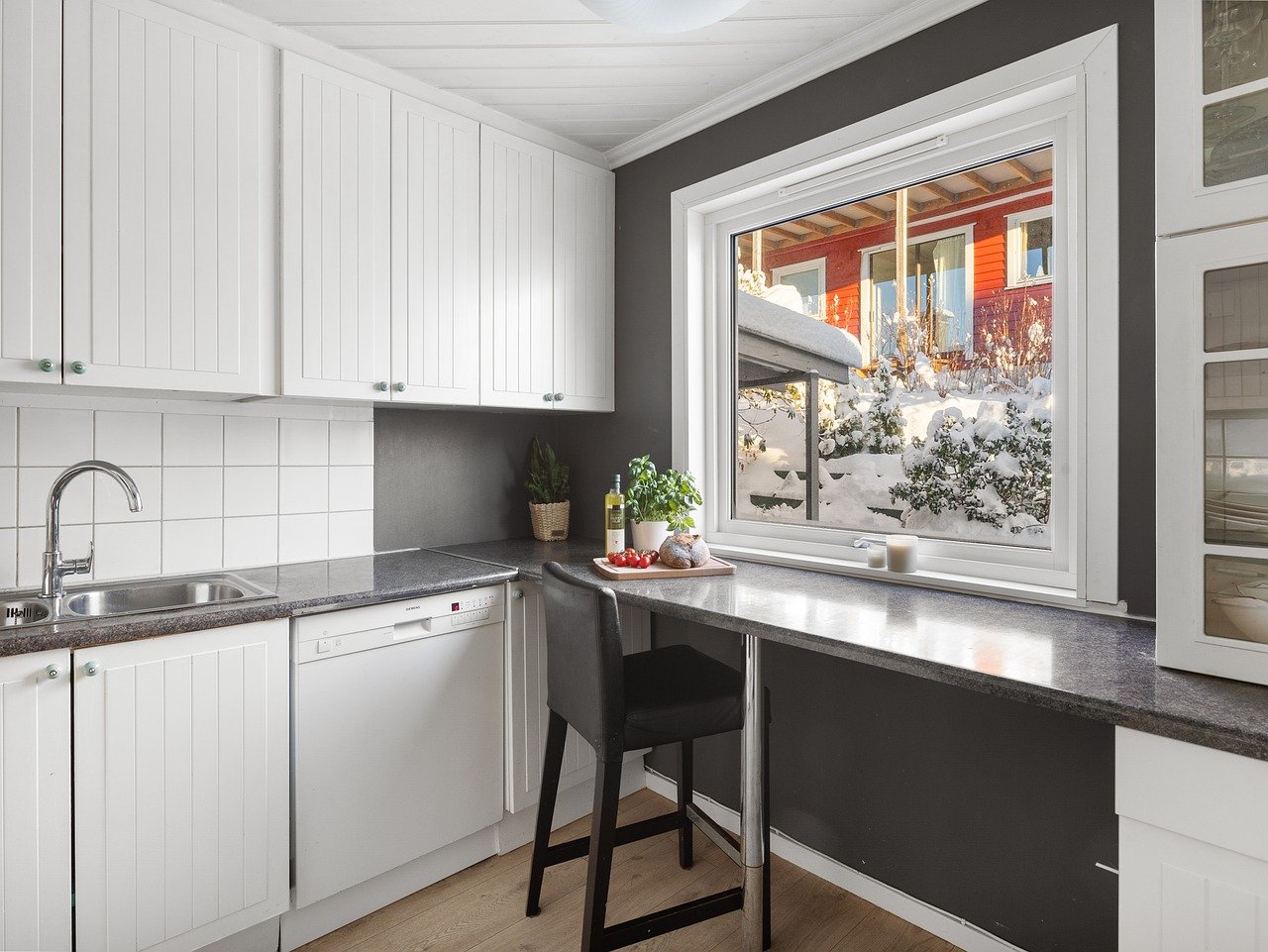
Choosing Natural Materials
When it comes to creating a nature-inspired decor, the **choice of materials** plays a pivotal role in achieving that serene and harmonious atmosphere. Imagine walking into a space where the textures and colors echo the great outdoors; it’s like inviting a slice of nature right into your home. So, what materials should you consider? Let’s dive into some of the best options!
Wood is undoubtedly one of the most versatile natural materials. From rustic reclaimed wood to sleek modern finishes, wood can bring warmth and character to any room. Think about using wooden beams or furniture pieces that tell a story. For instance, a coffee table made from a single slab of wood not only serves a purpose but also acts as a conversation starter. You can also incorporate wood in smaller items like picture frames or decorative bowls, adding a touch of nature without overwhelming the space.
Next up is stone. Whether it’s through a stunning granite countertop in the kitchen or a slate-tiled bathroom, stone adds an element of **earthiness** that’s hard to replicate. It’s durable, easy to maintain, and brings a cool, calming vibe to your interiors. You could even consider using pebbles or river stones in decorative arrangements or as part of your landscaping to connect your indoor and outdoor spaces.
Don’t forget about textiles. Natural fabrics like cotton, linen, and wool can soften the look of your decor while still keeping it grounded in nature. Imagine plush linen cushions on your couch or a cozy wool throw draped over a chair. These elements not only add comfort but also enhance the overall aesthetic. You can even choose textiles with earthy tones or botanical prints to further emphasize the nature theme.
To summarize, here’s a quick look at some fantastic natural materials you might want to incorporate into your decor:
| Material | Benefits |
|---|---|
| Wood | Warmth, versatility, and character |
| Stone | Durability, earthiness, and coolness |
| Textiles | Comfort, softness, and aesthetic enhancement |
By thoughtfully selecting these natural materials, you can create a living space that feels grounded and connected to the earth. So go ahead, embrace the beauty of nature in your home decor! It’s all about finding that perfect balance between style and comfort, and with the right materials, you can achieve just that.

Incorporating Plants
When it comes to bringing nature indoors, plants are your best friends. They don’t just beautify your space; they also create a calming atmosphere that can significantly enhance your mood. Imagine walking into your home and being greeted by the vibrant greens and earthy scents of your beloved plants. It’s like a breath of fresh air! Not only do plants add aesthetic appeal, but they also serve practical purposes, such as improving air quality and providing a sense of tranquility.
Choosing the right plants can make all the difference. From lush ferns to striking succulents, the options are endless. If you're unsure where to start, consider your lifestyle and the amount of natural light your home receives. Some plants thrive in bright, sunny spots, while others prefer the shade. For example, if you’re a busy bee, you might want to opt for low-maintenance varieties that don’t require constant attention. Here’s a quick breakdown of some popular indoor plants:
| Plant Type | Light Requirements | Maintenance Level |
|---|---|---|
| Snake Plant | Low to Bright Indirect Light | Low |
| Pothos | Low to Bright Indirect Light | Low |
| Peace Lily | Low to Bright Indirect Light | Medium |
| Spider Plant | Bright Indirect Light | Low |
Incorporating plants into your home decor can also be a fun and creative process. Think about how you want to display them. You could create a cozy corner filled with various pots or hang plants from the ceiling for a more dynamic look. Vertical gardens are another fantastic option, especially for those with limited floor space. By utilizing wall-mounted planters or shelves, you can create a stunning green wall that acts as a living piece of art.
Additionally, consider the type of pots and planters you use. Natural materials like clay, terracotta, or even wooden planters can enhance the nature-inspired aesthetic you’re aiming for. You can even personalize your pots with paint or embellishments that reflect your style. The key is to ensure that your plants not only survive but thrive in their new homes.
One of the most delightful aspects of incorporating plants into your decor is the variety of textures and colors they bring. From the smooth, glossy leaves of a rubber plant to the delicate fronds of a fern, each plant adds its unique character to your space. So, why not mix and match? Create a mini indoor jungle that showcases your personality and love for nature!
For those who lead busy lives, low-maintenance plants are a lifesaver. These hardy plants require minimal care while still providing the beauty and benefits of greenery. Here are some fantastic options:
- Succulents: These trendy little guys store water in their leaves, making them perfect for forgetful plant parents.
- Cacti: With their unique shapes and textures, cacti are not only low-maintenance but also a conversation starter.
- ZZ Plant: Known for its resilience, the ZZ plant can survive in low light and requires watering only every few weeks.
By incorporating these plants into your home, you can enjoy the beauty of nature without the stress of high maintenance. So go ahead, bring the outdoors in, and create a space that feels like a serene retreat!
Q: How often should I water my indoor plants?
A: It depends on the type of plant. Generally, it's best to check the soil moisture before watering. If the top inch of soil is dry, it’s time to water.
Q: Can I keep plants in low light conditions?
A: Absolutely! Many plants thrive in low light, such as snake plants and pothos. Just ensure they receive some indirect sunlight.
Q: What are the benefits of having indoor plants?
A: Indoor plants can improve air quality, boost your mood, and enhance your overall well-being. Plus, they add a touch of beauty to your space!

Low-Maintenance Options
For those of us who lead busy lives, the idea of maintaining a lush indoor garden can seem daunting. However, incorporating nature into your home doesn't have to be a full-time job. Enter low-maintenance plants, the unsung heroes of the indoor gardening world! These hardy plants not only add a refreshing touch of greenery to your decor but also require minimal care, making them perfect for anyone who loves nature but lacks the time to nurture it.
One fantastic option is the Snake Plant (Sansevieria), known for its striking upright leaves and ability to thrive on neglect. It can survive in low light and only needs watering every few weeks. Similarly, the Pothos is another favorite for its trailing vines that can drape elegantly from shelves or hang in baskets. This plant is not only forgiving but also purifies the air, making it a win-win for your home!
For those looking for something a bit more unique, consider the ZZ Plant (Zamioculcas zamiifolia). With its glossy leaves and resilience to drought, it’s practically indestructible. You could even place it in a stylish pot to elevate your decor game. These plants can easily fit into any room, from the living room to the bathroom, adding a touch of nature without the hassle.
Here’s a quick comparison of some popular low-maintenance options:
| Plant Name | Light Requirements | Watering Frequency | Air Purification |
|---|---|---|---|
| Snake Plant | Low to Bright Indirect Light | Every 2-3 weeks | Yes |
| Pothos | Low to Bright Indirect Light | Every 1-2 weeks | Yes |
| ZZ Plant | Low Light | Every 2-3 weeks | Yes |
By choosing these low-maintenance plants, you can enjoy the beauty of nature indoors without the stress of constant upkeep. Imagine walking into your home and being greeted by vibrant greenery that requires little more than the occasional glance and a sprinkle of water. It's like having a slice of the great outdoors right in your living room!
So, if you're ready to embrace a nature-inspired decor that fits seamlessly into your busy lifestyle, consider adding a few of these resilient plants to your collection. They are perfect conversation starters and will undoubtedly bring a sense of calm to your home, transforming it into a serene oasis.
- What are the best low-maintenance indoor plants? Some of the best options include Snake Plants, Pothos, and ZZ Plants.
- How often should I water my low-maintenance plants? Generally, every 1-3 weeks depending on the plant and environmental conditions.
- Can low-maintenance plants survive in low light? Yes, many low-maintenance plants thrive in low light conditions.
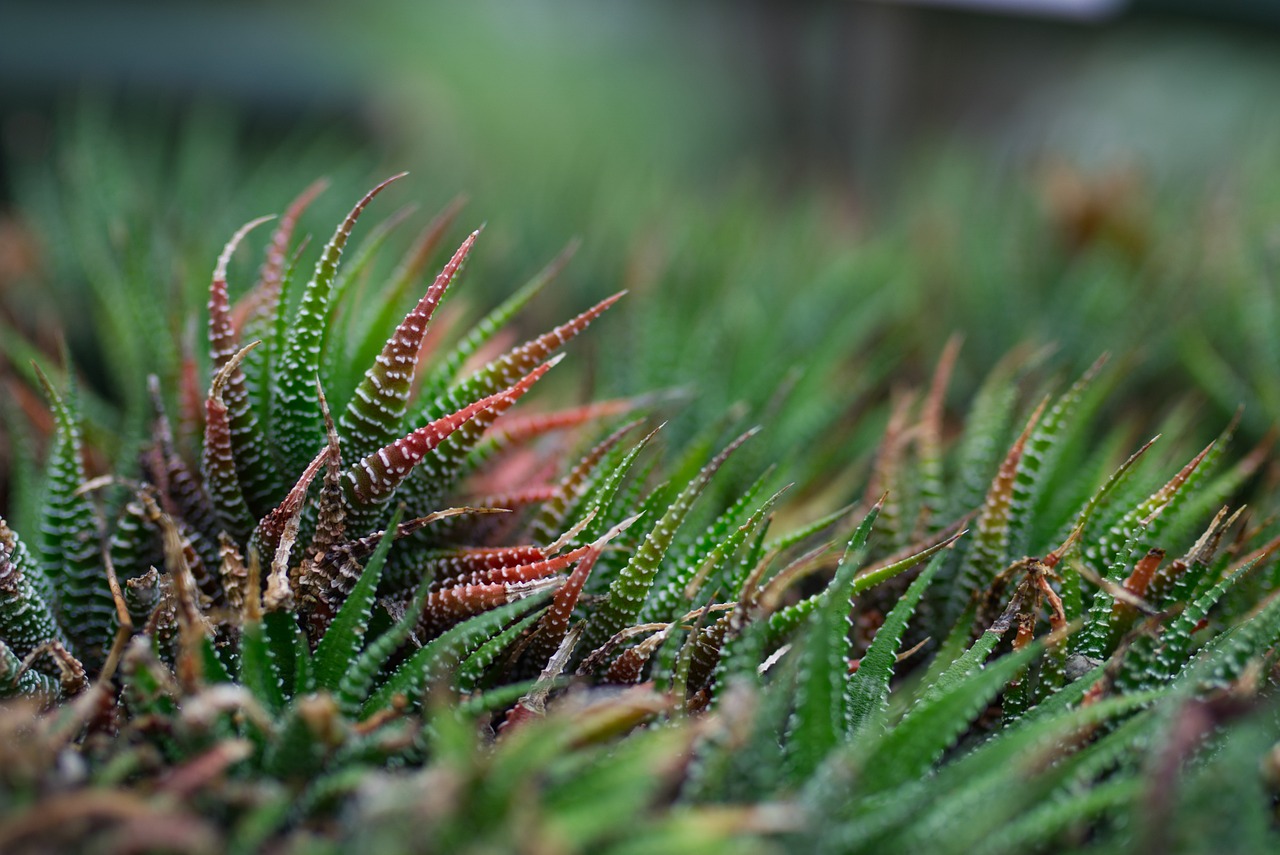
Succulents and Cacti
When it comes to adding a touch of nature to your home, succulents and cacti are like the rock stars of the plant world. They not only bring a vibrant pop of greenery but also add a unique aesthetic that can transform any space into a tranquil oasis. These hardy plants are perfect for those who might not have a green thumb or simply lead busy lives. With their stunning shapes and colors, they can enhance your decor while requiring minimal maintenance.
One of the most appealing aspects of succulents and cacti is their diversity. They come in various sizes, shapes, and colors, making it easy to find the perfect fit for your home. For instance, you might choose the striking Echeveria with its rosette shape or the quirky Haworthia that resembles a mini aloe plant. Cacti, on the other hand, can bring a touch of the desert into your living room with their tall, spiky silhouettes. Whether you prefer the classic round shape of a Barrel Cactus or the more whimsical appearance of a Christmas Cactus, there’s something for everyone.
To make the most of these plants, consider grouping them together in a decorative planter or terrarium. This not only creates a stunning visual display but also allows you to showcase their unique characteristics. For example, you could create a mini desert landscape by combining different types of cacti in a shallow dish filled with sand and pebbles. Alternatively, a vibrant succulent garden can be arranged in a colorful ceramic pot, adding a cheerful touch to any room.
Here are some tips for arranging your succulents and cacti:
- Vary Heights: Mix taller cacti with shorter succulents to create depth.
- Color Contrast: Pair plants with different colors and textures for a more dynamic look.
- Use Natural Elements: Incorporate stones, driftwood, or sand to enhance the natural feel.
Another fantastic aspect of succulents and cacti is their resilience. They thrive in various conditions and are perfect for busy individuals or families. With just a little sunlight and occasional watering, these plants can flourish. This makes them an ideal choice for those who may forget to tend to their greenery regularly. In fact, overwatering is often more of a concern than underwatering, so you can rest easy knowing that these plants are forgiving.
In addition to their aesthetic appeal, succulents and cacti also carry a range of benefits. They can improve air quality by filtering toxins and releasing oxygen, making them not just beautiful but also functional additions to your home. Plus, their unique shapes and textures can serve as excellent conversation starters, making them perfect for entertaining guests.
So, if you’re looking to create a nature-inspired decor that doesn’t require a lot of effort, succulents and cacti should definitely be on your radar. They are more than just plants; they are pieces of art that can breathe life into your home. With a little creativity and care, you can easily incorporate these stunning plants into your decor, creating a serene and inviting atmosphere that reflects your personal style.
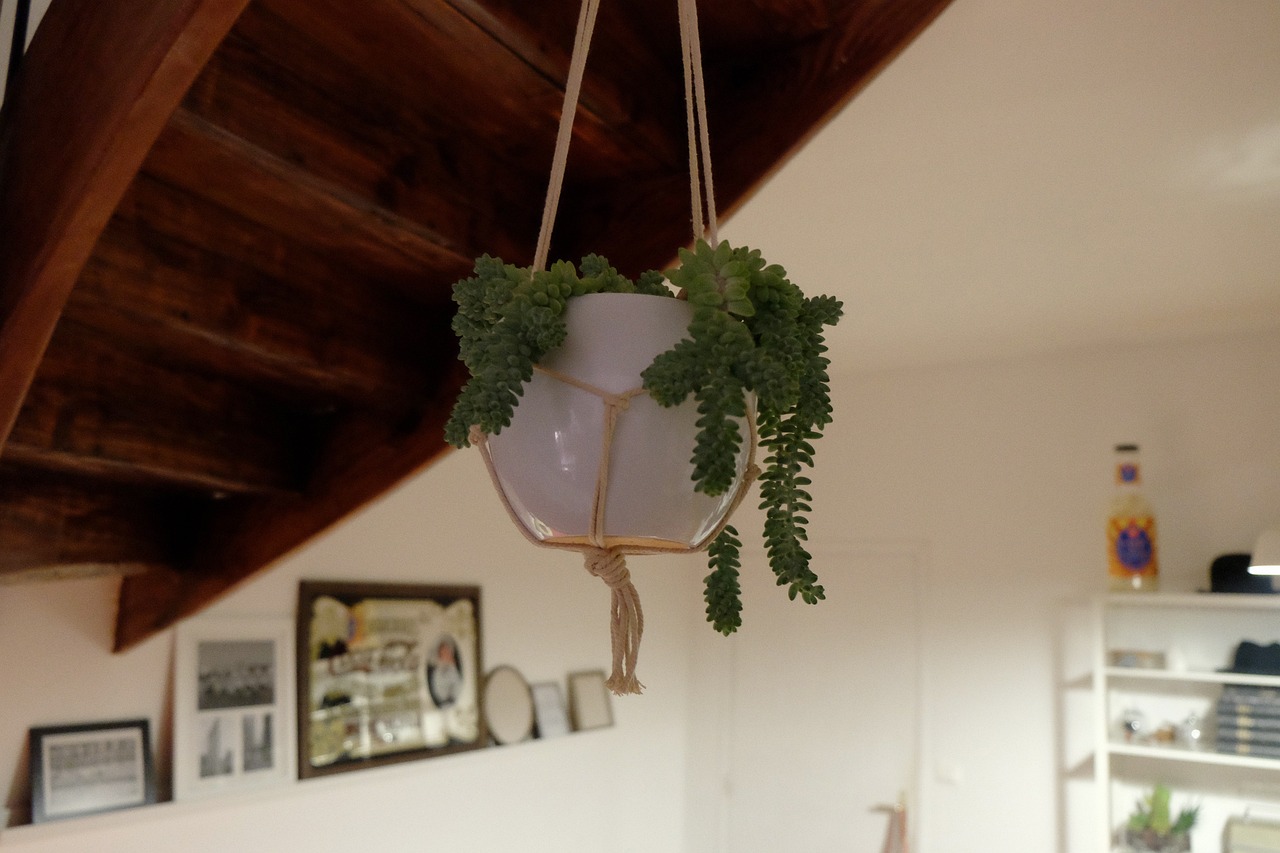
Air Plants
Air plants, or Tillandsia, are a remarkable addition to any nature-inspired decor. Unlike traditional plants, these unique specimens don't require soil to thrive. Instead, they absorb moisture and nutrients through their leaves, making them incredibly adaptable and easy to care for. Imagine having a vibrant piece of nature that can flourish in a variety of settings, from your kitchen windowsill to your living room shelf!
One of the most exciting aspects of air plants is their versatility in display. You can get creative and showcase them in numerous ways. Here are a few popular methods to incorporate air plants into your decor:
- Hanging Displays: Use macramé hangers or simple string to suspend air plants from the ceiling or walls, creating an enchanting floating garden.
- Terrariums: Place them in glass terrariums with decorative stones or driftwood for a stylish centerpiece that draws the eye.
- Wall Art: Create a living wall by attaching air plants to a wooden board or canvas, combining art and nature in a stunning way.
When it comes to care, air plants are quite forgiving. They thrive in bright, indirect sunlight and should be watered about once a week. A quick soak in water for 20-30 minutes is usually enough to keep them happy. After watering, ensure they dry upside down to prevent rot. This simple routine makes them perfect for busy lifestyles!
Moreover, air plants come in various shapes and sizes, allowing you to mix and match to create a visually appealing display. Some popular varieties include:
| Air Plant Type | Size | Care Level |
|---|---|---|
| Tillandsia ionantha | Small | Easy |
| Tillandsia xerographica | Medium | Moderate |
| Tillandsia capitata | Large | Easy |
Incorporating air plants into your home not only enhances your decor but also brings a sense of tranquility and connection to nature. They are perfect for those who want to enjoy the beauty of plants without the commitment of traditional gardening. So, why not give them a try? You might just find that these little wonders transform your space into a serene oasis!
Q: How often should I water my air plants?
A: Water your air plants once a week by soaking them in water for 20-30 minutes. Ensure they dry upside down to prevent rot.
Q: Do air plants need sunlight?
A: Yes, air plants thrive in bright, indirect sunlight. Avoid direct sunlight, as it can scorch their leaves.
Q: Can I use air plants in a bathroom?
A: Absolutely! Air plants love humidity, making them perfect for bathrooms. Just ensure they have access to light.
Q: How do I fertilize air plants?
A: You can use a bromeliad or orchid fertilizer diluted to half strength. Fertilize once a month during the growing season.

Creating a Plant Wall
Imagine walking into a room where greenery bursts forth from the walls, creating an instant oasis that invigorates your senses. A plant wall is not just a stunning visual element; it’s a way to bring the serenity of nature right into your home. The beauty of a plant wall lies in its versatility and the unique character it can add to any space. Whether you have a small apartment or a spacious living room, this DIY project can transform a dull wall into a vibrant focal point.
Before diving into the creation process, it's essential to consider a few key factors that will ensure your plant wall thrives. First, think about the location. Choose a wall that receives adequate light, as most plants will need some sunlight to flourish. If natural light is limited, don’t fret! There are plenty of low-light plants that can still create a lush appearance. Next, consider the design. Do you want a structured, geometric layout, or something more organic and free-flowing? The beauty of a plant wall is that you can customize it to reflect your personal style.
Once you’ve selected the ideal spot and design, it’s time to gather your materials. You’ll need a sturdy frame or grid system to support your plants. This can be as simple as a wooden frame or a more complex vertical garden system. The choice is yours! Additionally, ensure you have the right pots or containers for your plants. Hanging pots, wall-mounted planters, or even repurposed items like wooden crates can add charm and character to your wall.
When it comes to choosing the plants themselves, consider a mix of textures and colors for a dynamic look. Some popular options include:
- Ferns - Their feathery leaves add softness and elegance.
- Philodendrons - These hardy plants are perfect for beginners and thrive in various conditions.
- Spider Plants - Known for their air-purifying qualities, they also produce charming baby plants that dangle down.
- Succulents - These drought-resistant beauties come in various shapes and sizes, providing visual interest.
After selecting your plants, it's time to assemble your plant wall. Start by securing your frame to the wall, ensuring it’s level and firmly attached. Next, arrange your pots or containers in a way that pleases your eye. A good tip is to start with larger plants at the bottom and work your way up with smaller varieties. This creates a natural cascading effect that draws the eye upward.
Once everything is in place, it’s crucial to think about maintenance. Regular watering, proper drainage, and occasional pruning will keep your plant wall looking its best. Consider setting a reminder on your phone to check on your plants weekly. And don’t be afraid to mix things up! If a particular plant isn’t thriving, swap it out for something new. Your plant wall should evolve just like you do.
In conclusion, a plant wall is more than just decor; it’s a living piece of art that can enhance your home’s ambiance and improve air quality. So roll up your sleeves and get creative! The process of building your plant wall can be as rewarding as the final product itself.
Q: What types of plants are best for a plant wall?
A: The best plants for a plant wall are those that thrive in the light conditions of your space. Popular choices include ferns, philodendrons, spider plants, and succulents.
Q: How do I maintain my plant wall?
A: Regular watering, ensuring proper drainage, and occasional pruning are key to maintaining a healthy plant wall. Set a weekly reminder to check on your plants.
Q: Can I create a plant wall in a low-light area?
A: Yes! Many plants thrive in low-light conditions. Look for hardy options like snake plants or pothos that can adapt to less sunlight.
Q: How can I ensure my plant wall looks balanced?
A: Start with larger plants at the bottom and work your way up with smaller ones. Mixing textures and colors also helps create a visually appealing balance.
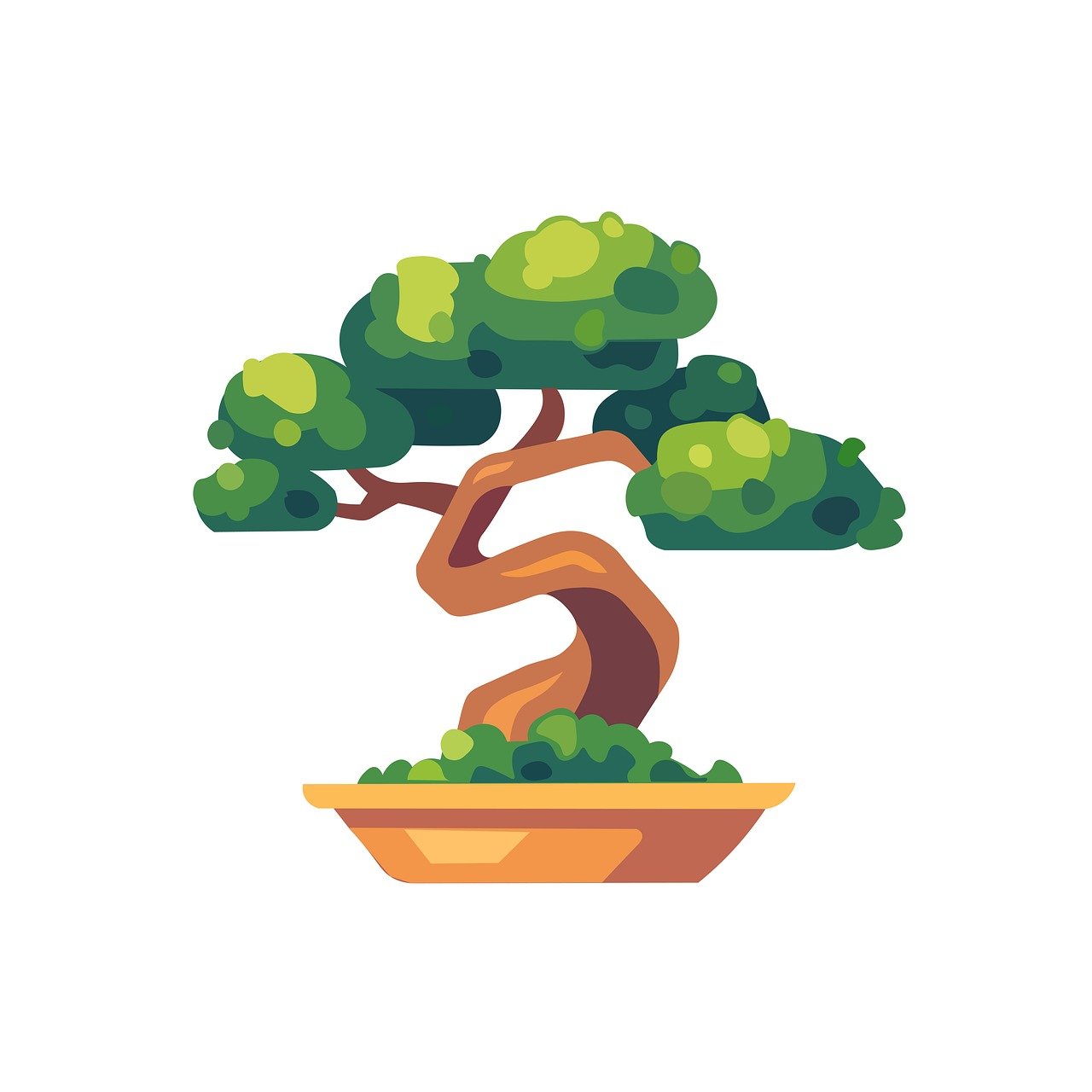
DIY Nature-Inspired Crafts
Crafting is not just a hobby; it’s a way to express your creativity while connecting with the natural world. By incorporating nature-inspired elements into your DIY projects, you can transform your living space into a tranquil oasis that reflects your personality. Imagine walking into a room adorned with handcrafted pieces that tell a story—your story! With just a few materials and a sprinkle of imagination, you can create stunning decor items that are both functional and beautiful. In this section, we’ll dive into some fantastic DIY projects that utilize natural elements, allowing you to create unique decor pieces that resonate with your style.
One of the simplest yet most charming projects you can undertake is making wood slice coasters. These rustic coasters are not only practical but also add a touch of warmth to your home. To create them, all you need are some wood slices, sandpaper, and a sealant. Start by selecting slices that have interesting grain patterns and shapes. After sanding the edges to ensure they’re smooth, apply a coat of sealant to protect the wood. You can even personalize them by painting designs or adding initials! These coasters are perfect for entertaining guests or simply enjoying a quiet evening with a cup of tea.
Another delightful project is creating pressed flower art. This craft allows you to capture the beauty of nature and bring it indoors in a stunning way. Start by picking flowers from your garden or local park—ensure they are free from pesticides! Place the flowers between the pages of a heavy book and let them dry for a week or two. Once dried, you can arrange them in a frame, creating a beautiful piece of wall art that adds color and life to any room. Not only does this project allow you to showcase your favorite blooms, but it also provides a meaningful connection to nature, reminding you of the beauty that surrounds us.
For those looking to add a touch of elegance, why not try your hand at making nature-inspired wall hangings? Using materials like twigs, dried flowers, and yarn, you can create stunning pieces that serve as conversation starters. Start by gathering your materials—think about the colors and textures that inspire you. You can weave the twigs together to form a base and then attach dried flowers or leaves using twine. Hang your creation in a prominent spot, and watch as it breathes life into your space!
As you embark on these DIY projects, remember that the goal is to have fun and let your creativity flow. Each piece you create will be a reflection of your personality and your connection to nature. Plus, these crafts make for great gifts! Imagine giving a friend a set of handmade coasters or a framed piece of pressed flower art. It’s not just a gift; it’s a piece of your heart and creativity.
To wrap it up, engaging in DIY nature-inspired crafts is a fantastic way to enhance your home decor while fostering a deeper appreciation for the environment. So, gather your materials, unleash your imagination, and let nature inspire your next crafting adventure!
Q: What materials do I need for wood slice coasters?
A: You will need wood slices, sandpaper, sealant, and optional paints or markers for personalization.
Q: How long does it take to press flowers?
A: Typically, it takes about one to two weeks for flowers to fully dry and flatten in a heavy book.
Q: Can I use any type of flower for pressed flower art?
A: Yes, but it’s best to choose flowers that retain their color and shape well after drying, such as daisies, pansies, and lavender.
Q: Are there any other nature-inspired crafts I can try?
A: Absolutely! You can also try making wreaths, terrariums, or even painting rocks with natural themes!

Wood Slice Coasters
Creating is a delightful and straightforward DIY project that can add a rustic charm to your home decor. Not only are these coasters functional, protecting your surfaces from water rings and heat marks, but they also serve as a beautiful conversation starter when guests come over. Imagine serving drinks on coasters that are not only practical but also showcase the beauty of nature right in your living room!
To start your wood slice coaster journey, you'll need to gather a few materials. You'll want to find some quality wood slices, which can often be purchased at craft stores or online. If you're feeling adventurous, you can even make your own by cutting branches from fallen trees. Just ensure they are dry and free from pests. The thickness of the slices can vary, but typically, a thickness of about 1/2 inch works well for coasters. You’ll also need some sandpaper, a sealer (like polyurethane), and optionally, some paint or wood stain if you wish to add a splash of color.
Once you have your materials, the fun begins! Start by sanding down the edges and surfaces of the wood slices to create a smooth finish. This step is crucial as it not only enhances the appearance but also prevents any splinters from ruining your guests' experience. After sanding, you can choose to leave the wood in its natural state or apply a coat of stain or paint. If you opt for color, consider using earthy tones that complement your home’s aesthetic.
After your wood slices are ready, apply a sealer to protect them from moisture and stains. This step is essential, especially if you plan to use them regularly. Allow the sealer to dry completely before using your coasters. Once finished, you can arrange them in a decorative basket on your coffee table or even hang them on the wall as art when not in use. The versatility of these coasters allows them to seamlessly blend into any decor style, from modern to rustic.
For those who want to take their wood slice coasters to the next level, consider personalizing them with initials, quotes, or designs using a wood burning tool. This adds a unique touch and makes them perfect for gifting. You can even create a set that reflects different seasons, using various wood types or paints to evoke the feel of spring, summer, fall, and winter.
In summary, wood slice coasters are not just a practical addition to your home; they are a fantastic way to bring a piece of nature indoors while showcasing your creativity. So gather your materials, unleash your inner artisan, and enjoy the process of crafting something truly special for your living space!
- What type of wood is best for making coasters? Hardwoods like oak, maple, or birch are ideal because they are durable and less likely to warp.
- Can I use these coasters outdoors? While they can be used outdoors, it’s best to keep them in a sheltered area to protect them from moisture and direct sunlight.
- How can I clean my wood slice coasters? Simply wipe them down with a damp cloth. Avoid soaking them in water to prevent damage.
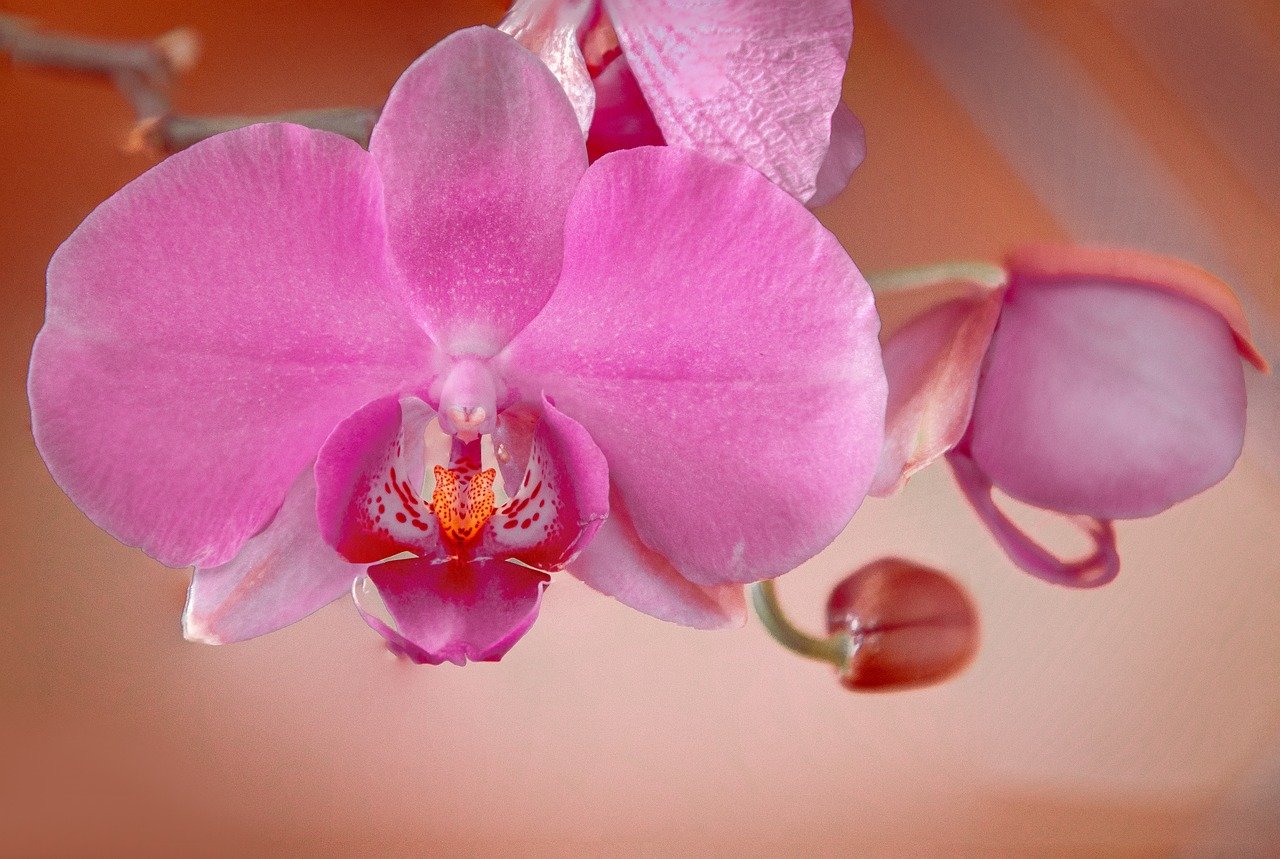
Pressed Flower Art
Pressed flower art is not just a craft; it’s a way to bring the beauty of nature indoors and preserve its delicate charm. Imagine capturing the vibrant colors and intricate designs of flowers, then transforming them into stunning pieces of art that tell a story. This DIY project is not only simple but also incredibly rewarding, allowing you to create unique decor that reflects your personal style. Plus, it’s a fantastic way to recycle flowers from special occasions like weddings, anniversaries, or even a lovely bouquet you received just because!
To get started on your pressed flower journey, you'll need a few basic supplies. Gather some fresh flowers, a heavy book or a flower press, parchment paper, and a frame to showcase your artwork once it's complete. The process is straightforward: place the flowers between sheets of parchment paper, then stack them within the pages of a heavy book or in a flower press. Leave them for about two to three weeks to ensure they dry completely. This waiting period might feel like an eternity, but trust me, the anticipation only adds to the excitement of unveiling your beautiful creations!
Once your flowers are perfectly pressed, the fun really begins. You can arrange them in various ways to create stunning compositions. Whether you prefer a minimalist look with just a few flowers or a more elaborate design that showcases a variety of colors and shapes, the choice is yours. Use a frame to display your art, or consider using a shadow box for a three-dimensional effect. Add a personal touch by including handwritten notes or quotes that resonate with your experience of gathering those flowers.
Pressed flower art can be a wonderful addition to any room in your home. Consider creating a gallery wall with multiple pieces, or use smaller frames to decorate shelves and tabletops. This art not only beautifies your space but also serves as a conversation starter. Guests will be intrigued by the story behind each piece, and you’ll enjoy sharing the memories associated with the flowers. Plus, this kind of decor is perfect for those who appreciate the beauty of nature but might not have the green thumb to keep live plants thriving!
For those who want to take their pressed flower art to the next level, consider experimenting with different mediums. You can incorporate pressed flowers into greeting cards, bookmarks, or even resin projects. The possibilities are endless! Just remember, the key to beautiful pressed flower art lies in the quality of the flowers you choose. Opt for vibrant blooms that are in full bloom and avoid any that are wilting or damaged. This attention to detail will ensure your finished pieces are as stunning as the flowers themselves.
In conclusion, pressed flower art is a delightful way to celebrate nature and express your creativity. It’s an engaging project that encourages mindfulness and appreciation for the beauty around us. So, gather your flowers, get creative, and let your imagination blossom!
Q: How long do pressed flowers last?
A: When properly pressed and framed, flowers can last for years. However, they may fade over time due to exposure to sunlight, so it's best to display them in a place with indirect light.
Q: Can I press any type of flower?
A: Most flowers can be pressed, but some work better than others. Flat flowers like daisies, pansies, and violets tend to press well, while thicker blooms may not flatten as nicely.
Q: How do I preserve the color of pressed flowers?
A: To help maintain the color of pressed flowers, avoid direct sunlight and consider using a UV-protective frame. Additionally, pressing flowers quickly after picking them can help preserve their vibrancy.
Q: Are there any alternatives to using a heavy book for pressing flowers?
A: Yes! You can use a flower press specifically designed for this purpose, or even try using a microwave flower press for quicker results.
Frequently Asked Questions
- What materials are best for DIY nature-inspired decor?
When creating nature-inspired decor, it's best to use materials like wood, stone, and natural textiles. These materials not only enhance the aesthetic appeal but also bring a sense of warmth and tranquility to your living space. Think of them as the building blocks of your serene sanctuary!
- Which indoor plants are easiest to care for?
If you're swamped with a busy schedule, consider low-maintenance plants like succulents, cacti, and air plants. These hardy options require minimal care and can thrive in various conditions, making them perfect for anyone wanting to add greenery without the fuss!
- How can I create a plant wall?
Creating a plant wall is easier than you might think! Start by selecting a variety of plants that suit your space and light conditions. Use wall-mounted planters or shelves to arrange them in an eye-catching design. Remember, it's all about layering and variety to make that vertical garden pop!
- What are wood slice coasters and how do I make them?
Wood slice coasters are rustic, charming pieces you can easily make at home. Simply slice a log into thin rounds, sand them down for a smooth finish, and seal with a protective coating. They not only protect your surfaces but also add a touch of nature to your decor!
- Can I use pressed flowers for decor?
Absolutely! Pressed flowers can be transformed into stunning wall art. Just gather your favorite blooms, press them between heavy books, and once dried, frame them to create beautiful pieces that showcase nature's beauty right in your home.



















